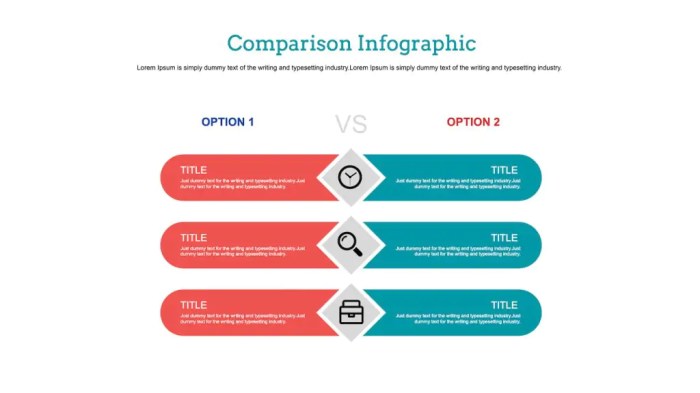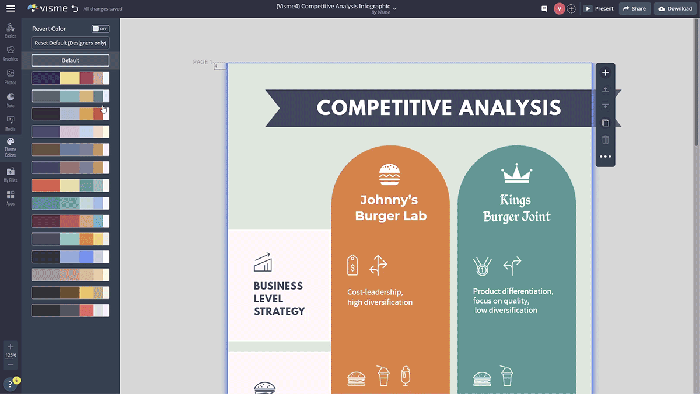Creating Comparison Content is all about breaking down different products, services, or ideas to help consumers make informed decisions. Dive into this guide to learn how businesses can benefit from comparison content.
Introduction to Creating Comparison Content

Creating comparison content involves analyzing and contrasting different products, services, or ideas to help consumers make informed decisions. This type of content is crucial in today’s market where consumers have a wide array of options to choose from.
Importance of Creating Comparison Content
Comparison content plays a vital role in assisting consumers in evaluating various options available to them. By providing detailed comparisons, consumers can weigh the pros and cons of each choice, ultimately making a well-informed decision that aligns with their needs and preferences.
- Empowers consumers: By presenting comprehensive comparisons, consumers can easily understand the differences between products or services, enabling them to select the best fit for their requirements.
- Builds trust: When businesses provide transparent and unbiased comparison content, it establishes credibility and trust with consumers, showcasing the company’s commitment to helping customers make the right choice.
- Enhances decision-making: Comparison content simplifies the decision-making process for consumers, saving them time and effort in researching various options on their own.
Benefits of Comparison Content for Businesses
Comparison content is not only beneficial for consumers but also for businesses looking to increase their marketing and sales efforts.
- Increases visibility: By creating comparison content, businesses can attract more traffic to their website as consumers actively search for detailed comparisons before making a purchase.
- Boosts conversions: Providing valuable comparison information can lead to higher conversion rates as consumers are more likely to trust a business that offers transparent insights into product/service differences.
- Establishes expertise: Through comparison content, businesses can showcase their industry knowledge and expertise, positioning themselves as authorities in their field and gaining the trust of potential customers.
Types of Comparison Content

When creating comparison content, it’s essential to consider the different formats that can be utilized to engage various audiences. Each type of comparison content caters to different preferences and can effectively convey information in a unique way.
Articles
Articles are a popular format for creating detailed and in-depth comparison content. They allow for a thorough exploration of different products, services, or topics, providing a comprehensive analysis for readers who prefer written information.
Videos
Videos are another effective format for comparison content, especially for audiences who prefer visual and interactive content. Through videos, complex comparisons can be simplified and presented in a dynamic and engaging manner, making it easier for viewers to digest the information.
Infographics
Infographics combine visual elements with concise text to present comparison content in a visually appealing and easy-to-understand format. They are ideal for capturing the attention of audiences who prefer quick and visually stimulating information.
Tables, Creating Comparison Content
Tables are a straightforward and organized way to present comparison content, allowing for a side-by-side comparison of different features, specifications, or data points. They are particularly useful for audiences who prefer a clear and structured layout when comparing information.
Successful examples of comparison content pieces can be found across various industries. For instance, in the tech industry, articles comparing the latest smartphones or laptops are popular among consumers. Video reviews comparing different makeup products are widely viewed in the beauty industry. Infographics comparing travel destinations are shared on social media platforms. Tables comparing insurance plans are commonly used in the financial sector.
By leveraging different formats of comparison content, creators can effectively cater to diverse audience preferences and deliver information in a way that resonates with their target audience.
Strategies for Creating Effective Comparison Content
When it comes to creating comparison content, there are several strategies you can employ to make sure your content is informative, engaging, and unbiased. Let’s dive into some key tips to help you create effective comparison content that resonates with your audience.
Tips for Conducting Thorough Research
To gather accurate information for your comparisons, it’s crucial to conduct thorough research. Here are some tips to help you gather reliable data:
- Utilize reputable sources: Make sure to use credible sources for your information to ensure accuracy.
- Compare multiple sources: Cross-referencing information from different sources can help you verify the accuracy of the data.
- Consider both qualitative and quantitative data: Use a combination of qualitative and quantitative data to provide a comprehensive comparison.
Importance of Presenting Unbiased Information
It’s essential to present unbiased information in your comparison content to maintain credibility and trust with your audience. Here’s why unbiased information is crucial:
- Builds trust: Unbiased information helps establish trust with your audience and positions you as a reliable source of information.
- Ensures fairness: Presenting information without bias ensures that all aspects of the comparison are considered equally.
- Enhances credibility: Unbiased content enhances your credibility as a content creator and fosters a positive reputation among your audience.
Best Practices for Structuring and Formatting Comparison Content
Structuring and formatting your comparison content effectively can enhance readability and engagement. Here are some best practices to consider:
- Use clear headings and subheadings: Organize your content with clear headings and subheadings to guide your audience through the comparison.
- Utilize visual aids: Incorporate visuals such as charts, graphs, or tables to present data in a visually appealing and easy-to-understand format.
- Keep it concise: Avoid unnecessary information and focus on key points to keep your comparison content concise and impactful.
Tools and Resources for Creating Comparison Content
When it comes to creating effective comparison content, having the right tools and resources at your disposal can make a significant difference in the quality of your work. From data collection to visual creation and metric analysis, here are some essential resources to help you streamline your comparison content creation process.
Useful Tools for Collecting Data
- Google Sheets: Great for organizing and analyzing data sets for your comparisons.
- SurveyMonkey: Useful for collecting survey data to use in your comparisons.
- SEMrush: Helps you analyze competitor data and s for comparison content.
Creating Visuals for Comparison Content
- Canva: A user-friendly graphic design tool for creating visually appealing charts and infographics.
- Tableau: Ideal for creating interactive data visualizations to enhance your comparison content.
Analyzing Metrics for Comparison Content
- Google Analytics: Track and analyze the performance of your comparison content to optimize for better results.
- Ahrefs: Helps you monitor backlinks and organic search traffic for your comparison content.
Using Comparison Templates
Comparison templates can be a game-changer in speeding up your content creation process. By utilizing pre-designed templates, you can easily plug in your data and focus on the analysis and insights rather than spending time on formatting. Look for templates that are customizable to fit your specific needs and branding.
Optimizing Comparison Content for
When creating comparison content, it’s crucial to optimize it for search engines to ensure maximum visibility. Incorporate relevant s, meta descriptions, and alt text for images to improve your content’s ranking on search engine result pages. Additionally, focus on creating high-quality and engaging content that provides value to your audience, as this will also contribute to your efforts.